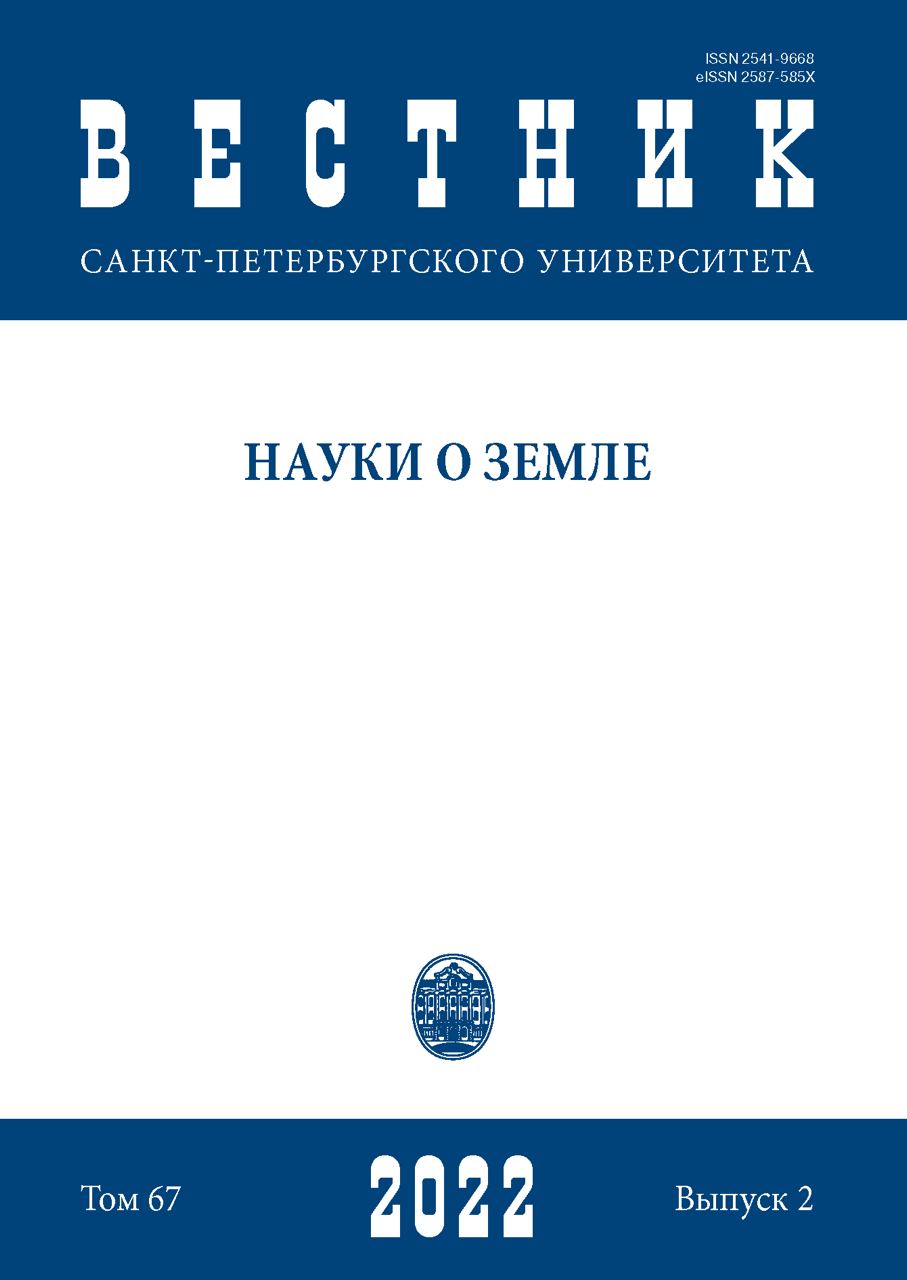230Th/U age and paleobotanic description of the organic-rich layer from the “Ilya Prorok” section on the Bolshaya Kosha River (Upper Volga basin)
DOI:
https://doi.org/10.21638/spbu07.2022.203Abstract
This article presents new data from geochronological study the lake-bog organic-rich layer from of the “Ilya Prorok” sequence (Upper Volga Basin, Tver Region) that is a one of the reference sections located on the Russian Plain. Ideas concerning the age and climatic conditions of these organic-mineral deposits formation changed significantly over the long history of their study. As a result, the viewpoint about the belonging of this layer to the Likhvin time began to prevail. However, it is still unclear with which marine isotope-oxygen stage (MIS) the Likhvin interglacial can be compared. According to the paleobotanical study of the lake-bog from the Ilya Prorok section, it was confirmed that the lower part of the lake-bog layer can be attributed to the warm phases of the Likhvin interglacial, while its upper half was deposited during the transition to cooling after the interglacial period. For the first time, the radioisotope age of the buried lake-bog deposits of the reference section “Ilya Prorok” have obtained. According to the data of direct 230Th/U dating, the formation of the sequence probably began no earlier than ~ 326–260 Kyr ago. The 230Th/U age of the buried peat bog from its upper half, according to the results of applying the isochronous approximation, can be correlated with the interval ~256–225 Kyr ago. According to these data, the Likhvin deposits were formed no earlier than MIS-9.
Keywords:
buried lake-bog deposits, Middle Pleistocene, Likhvin interglacial, uranium-thorium (230Th/U) dating method, palaeobotanical analysis
Downloads
References
Downloads
Published
How to Cite
Issue
Section
License
Articles of "Vestnik of Saint Petersburg University. Earth Sciences" are open access distributed under the terms of the License Agreement with Saint Petersburg State University, which permits to the authors unrestricted distribution and self-archiving free of charge.






